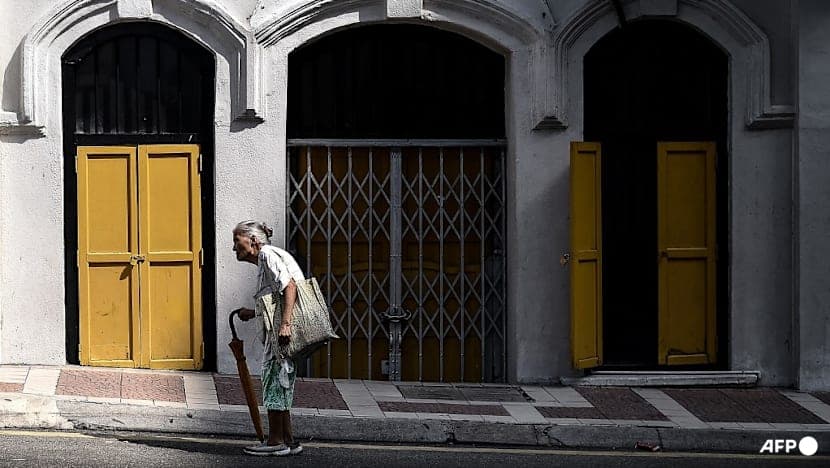A rapidly aging nation faces a thin safety net
Malaysia has been warned by the World Bank that it risks an elderly care crisis unless it widens and strengthens social pensions. Coverage is among the lowest anywhere. Fewer than one in ten Malaysians aged 65 and older receive any targeted social pension today. The core scheme, Bantuan Warga Emas, reaches about 4 percent of seniors. At the same time the share of older people is rising fast. The country is already an aging society, and the speed of change now matches the rapid transitions seen in China and Japan. Without stronger income support in later life, more Malaysians will struggle to meet basic needs in old age.
New projections show 14 percent of the population will be 65 or older by 2045, rising to about 20 percent by 2056. That means one in five people will be senior citizens within a generation. Existing transfers are modest and reach a narrow slice of the elderly population. Social pension coverage in Malaysia sits far below regional peers and global averages. The World Bank study argues that the gap between demographic reality and current support has widened, and that a broader, more predictable safety net is needed.
Financial preparation for retirement remains weak for many. Savings in the Employees Provident Fund are often depleted within three to five years after withdrawal. Nearly half of EPF members who reached age 55 in 2023 had less than 10,000 ringgit. The Bank estimates that a nest egg around 250,000 ringgit is needed to maintain a basic standard of living in retirement. Only about 42 percent of the working age population contributes to any formal pension arrangement. Many older Malaysians rely on adult children, yet family size has fallen and more seniors now live alone or in older only households.
In a new policy paper, the World Bank frames the challenge in plain terms.
Malaysia’s population is aging rapidly, but its social pension coverage and adequacy are relatively low.
To address the shortfall, the Bank recommends a significant expansion of social pensions. Coverage could first be extended to older people in the lowest 40 percent of households by income. The study also calls for automatic indexation of payments to inflation, a revision of income thresholds to reflect real living costs, and a higher eligibility age aligned to longer life expectancy. The goal is a system that is broader, fairer, and more durable. The government has already set aside 1.26 billion ringgit in Budget 2026 for senior welfare, an allocation expected to benefit about 180,000 people. Even so, current commitments meet only a fraction of the need.
Why social pensions matter
Social pensions are government financed transfers paid to older people. They do not require prior contributions by recipients. Eligibility is usually based on age, income, or both. International evidence shows that even modest social pensions reduce poverty, narrow inequality, and improve well being for recipients and their extended families. They also stabilize consumption when health shocks or job loss affect households that support older relatives. For countries moving quickly into old age, these transfers become the essential last line of income security.
In Malaysia, direct support for older people remains small. Bantuan Warga Emas currently reaches around 4 percent of seniors. Another program, Sumbangan Tunai Rahmah, is received by about 60 percent of older people as part of a broader low income cash transfer. The combined value typically represents less than a tenth of pre transfer income for most older households. Compared with regional peers, Malaysia is an outlier on coverage. Thailand provides a near universal old age allowance that reaches almost nine in ten seniors. The Philippines and Vietnam each cover close to three in ten.
What is Bantuan Warga Emas
Bantuan Warga Emas is a monthly payment of 600 ringgit to eligible senior citizens. It is paid into bank accounts to help cover basic living expenses. The scheme targets Malaysians aged 60 and above who have no fixed income or pension. Households must fall below the official poverty line. Applicants cannot be living in government welfare institutions or receiving overlapping assistance. The narrow income test and existing exclusions keep many older people outside the program, including those with small savings that do not last long or those with informal income that fails to cover rising costs.
These design limits explain the low reach. Many who are asset poor or who face high medical costs do not qualify. Others may be missed because household level tests do not capture individual hardship within multigenerational families. Over time, these gaps are likely to widen if benefits are not indexed to prices and if eligibility rules are not updated to reflect the cost of decent living. The interaction between Bantuan Warga Emas and Sumbangan Tunai Rahmah also needs a clearer policy intent so that older people are not left with a patchwork of small, uncoordinated transfers.
The savings gap and EPF
Malaysia has relied heavily on the Employees Provident Fund to deliver retirement income. The fund has a strong investment record, but many members contribute irregularly or stop contributing when they move into informal work. Early withdrawals during the COVID 19 period lowered many balances. With withdrawals permitted at age 55, many retirees draw down savings long before they stop working or before they qualify for other old age support. The result is a savings gap that persists into later life, especially for women and low wage workers.
The World Bank argues that Malaysia should gradually raise the EPF withdrawal age into the range of 65 to 70. A higher access age would keep savings invested for longer, allow compounding, and improve retirement adequacy. The Bank also recommends lifting the social pension eligibility age to at least 65, with future adjustments linked to life expectancy. A higher entry age, paired with wider coverage, could make it possible to pay higher average benefits without placing excessive pressure on public finances.
Concerns that working longer could displace young people are often raised in public debate. The World Bank examined Malaysian labor market data and reached a different conclusion.
Therefore, extending working lives should not be seen as a threat to youth employment.
In other words, more jobs for older workers and more jobs for young workers can go together. Older and younger workers tend to have different skills. When both are employed, firms benefit from experience and new ideas, and the economy grows.
What the World Bank recommends
The study lays out a sequence of reforms that balance protection, equity, and fiscal prudence. First, expand social pension coverage to older people in the lowest 40 percent of households. Second, update income eligibility thresholds to reflect the cost of decent living, and index benefits to inflation to preserve purchasing power. Third, improve the targeting system and ensure public databases can work together so that eligibility decisions are timely and accurate. Fourth, in light of longer and healthier lives, raise the eligibility age for social pensions to at least 65 and link future thresholds to life expectancy. These steps would build a stronger floor under incomes in old age while containing costs as the population ages.
The World Bank is clear that financing needs careful design, and that reforms can be phased to manage costs and public expectations.
Fiscal sustainability is key, but expansion is possible with targeted design and revenue reforms.
How much could expansion cost
There is already movement on policy. Under Budget 2026, the government earmarked 1.26 billion ringgit for senior welfare, a package expected to support around 180,000 older Malaysians. That allocation does not yet reflect an expanded social pension, but it signals a growing commitment to old age income security. The Bank’s modeling indicates that well designed expansion would reduce poverty among older people, and reduce inequality across the whole population, with effects that grow as the share of seniors rises.
Cost control depends on design choices. Raising the eligibility age while widening coverage can create room for higher average benefits within a sustainable budget. Protecting current recipients while applying a higher age to new entrants can smooth the transition. Data from the Household Income and Expenditure Survey shows that relative poverty rises with age for households headed by older people, at around 24 percent for those aged 60 and above, 42 percent for 65 and above, and 49 percent for 70 and above. These figures make a case for coupling a higher entry age with a strong expansion in coverage so that those most at risk are reached.
Lessons from other countries
Malaysia is not the first country to confront rapid aging with gaps in contributory pensions. China and India built social pensions that now reach large numbers of rural and informal workers. Across Latin America, modest old age transfers have been associated with lower poverty and better health outcomes for seniors and their families. Thailand illustrates what near universal coverage looks like in practice, with an old age allowance that reaches most seniors and provides a predictable minimum regardless of work history.
Experiences abroad highlight key choices. Universal benefits are simple and inclusive, but they cost more. Means tested benefits aim at those most in need, but they require robust data and administration. Many countries use indexation to keep benefits aligned with prices. Others also link eligibility ages to life expectancy to keep systems stable as people live longer. Malaysia can draw on these lessons while tailoring reforms to its fiscal space and administrative capacity.
Political and social trade offs
Any change to retirement policy must balance speed, adequacy, and trust. Raising eligibility ages is sensitive, even when it reflects the reality that Malaysians live longer and healthier lives than when current rules were set. Policymakers can maintain trust by expanding coverage at the same time, by protecting current recipients from adverse changes, and by explaining clearly how benefits will keep pace with inflation. A transparent indexation rule helps reduce uncertainty for families planning for later life.
Effective delivery matters as much as policy design. Better interoperability of public databases can reduce exclusion and ensure older people do not have to navigate multiple agencies to prove eligibility. Stronger outreach can help people apply early and avoid breaks in support. At the same time, income security in old age needs to sit alongside health care and aged care reforms. A new assisted living project backed by the Retirement Fund Inc in Kepala Batas, Penang, shows how housing and care can evolve alongside income support to meet the needs of low income seniors.
What comes next
Malaysia has the opportunity to strengthen the foundations of retirement security before population aging accelerates further. The National Ageing Agenda provides a policy platform to do it. High priority steps include expanding social pension coverage to the lowest 40 percent of households, setting a rule based indexation formula, updating income thresholds to reflect living costs, and planning a gradual rise in the eligibility age that is tied to life expectancy. Together, these measures can protect more seniors while maintaining fiscal discipline.
Progress will also depend on better data and monitoring. Regular tracking of benefit adequacy, take up, and poverty by age will show whether reforms are working. Independent evaluations can inform adjustments to program rules. A stronger social pension will not replace the EPF or civil service pensions. It will complement them, filling the gap for Malaysians who reach old age with little or no savings and for those whose savings do not last long enough.
Key Points
- Fewer than 10 percent of Malaysians aged 65 and over receive a targeted social pension, and Bantuan Warga Emas reaches about 4 percent of seniors.
- Malaysia will be an aged society by the mid 2040s, with around 14 percent of the population aged 65 and above, and about 20 percent by 2056.
- Nearly half of EPF members reaching age 55 in 2023 had less than 10,000 ringgit, and many savings are depleted within three to five years of withdrawal.
- Only about 42 percent of the working age population contributes to a formal pension scheme.
- About 60 percent of older people receive Sumbangan Tunai Rahmah, but combined with Bantuan Warga Emas the transfer is typically less than 10 percent of pre transfer income for most older households.
- The World Bank recommends expanding coverage starting with the lowest 40 percent by income, indexing benefits to inflation, revising income thresholds, and improving targeting and data systems.
- Raising the social pension eligibility age to at least 65, with future adjustments linked to life expectancy, is advised to keep the system sustainable.
- Budget 2026 allocates 1.26 billion ringgit for senior welfare, expected to benefit about 180,000 people.
- The Bank proposes raising the EPF withdrawal age into the 65 to 70 range to improve retirement adequacy.
- International evidence shows social pensions reduce poverty and inequality and support better health and well being among older people and their families.












